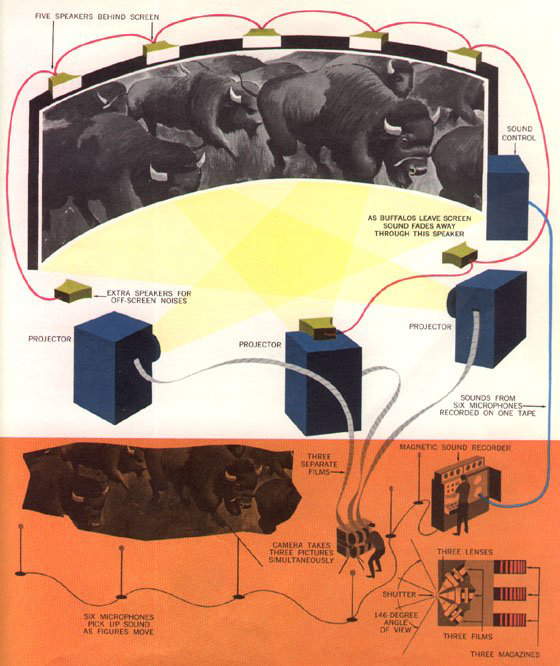Facing an economic challenge from television in the 1950s, Hollywood studios relied on spectacle to draw audiences back to movie theaters. This accounts for the frenzy of wide-screen epics (such as Quo Vadis and Ben-Hur) during that era. There were many systems in use, but the most highly touted was Cinerama, which was first presented at the 1939 New York World’s Fair as Vitarama.
Cinerama is a process of simultaneous filming by three cameras. The cameras are pointed at different angles and are then projected by three synchronized projectors and shown on a curved screen.
Cinerama made its commercial debut in 1952, with the film This Is Cinerama (Merian C. Cooper). A thrill-packed travelogue that features a roller-coaster ride and an air trip through the Grand Canyon, the film exploited three (slightly angled) images, three projectors, and three screens to provide a sensation of “being there” vastness and breadth. The premiere and subsequent Cinerama projects were commercially successful, but the system was ungainly (for example, the supposedly coordinated images could fall out of synch in a jarring manner). When the 70-mm. process was perfected, it essentially replaced Cinerama.
